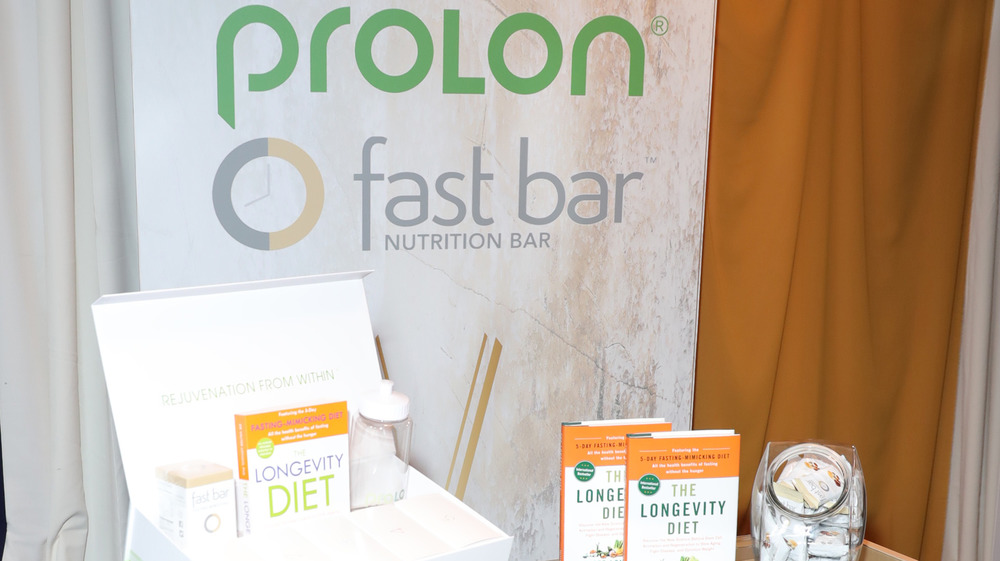How To Intermittent Fast With Food
Intermittent fasting is one of the latest health trends to both help promote weight loss and encourage healthy metabolism, glucose, and aging (via National Institutes of Health). The idea behind this trend is that instead of counting calories in regular meals, dieters highly restrict their calorie intake over a specific period of time, often 3 to 5 days.
We asked expert Dr. James Kelley, Medical Science Liaison for Fast Bar, about how the intermittent fasting diet can work. "One of the more intriguing concepts in fasting is the Fasting Mimicking Diet," Kelley said. "FMD allows someone to fast while still consuming food — it has been carefully designed with specific micro- and macronutrients that can deliver nutrition without activating the body's food-recognizing sensors, also known as Nutrient-Sensing Pathways (NSPs)."
Dr. Kelley continued, "By keeping these sensors below a certain threshold, FMD is able to keep the cells in a stress-resistant fasting state, triggering intracellular clean-up and rejuvenation. In other words, FMD allows someone to eat during a fast but the cells don't recognize it, and stay in a fasting state." In slightly simpler terms — you can achieve the results of fasting while still getting to eat something.
Studies report the success of these diets, noting, "cycles of a 5-day FMD are safe, feasible, and effective in reducing markers/risk factors for aging and age-related diseases" (via National Institutes of Health).
Prolon is one of the better-known fasting options
Barriers to the success of this type of intermittent fasting diet are often related to cost of supplements, understanding of dietary needs, and the ability of the dieter to stick to such a restrictive diet (via Healthline). Due to these barriers, many people turn to some ready-to-use fast mimicking diet (FMD) plans.
Dr. James Kelley, Medical Science Liaison for Fast Bar, explained to Mashed, "The most well-known version of FMD is the Prolon 5-day meal program, but FMD can also be used to help extend an intermittent fast. The FastBar, based on the principles of the FMD, was developed applying the same specific ratios for the macronutrients that were tested in the Prolon clinical trial." He added, "The unique combination of micro- and macro-nutrients in the Fast Bar is scientifically designed to nourish the body while downregulating the body's key nutrient-sensing pathways."
The last thing most of us want to do when tired and hungry is to spend a lengthy time preparing a tiny meal. By finding a supportive health program, you're able to take the guesswork out of your diet plan while also ensuring you maintain enough nutrition to be helpful, instead of harmful, to your body.
As with all diets, there are multiple versions of FMD to choose from in both supplements and strategies, so if you don't like one, don't let that be a barrier to your efforts. Find the right tools for your own needs and start celebrating health on our own terms.

